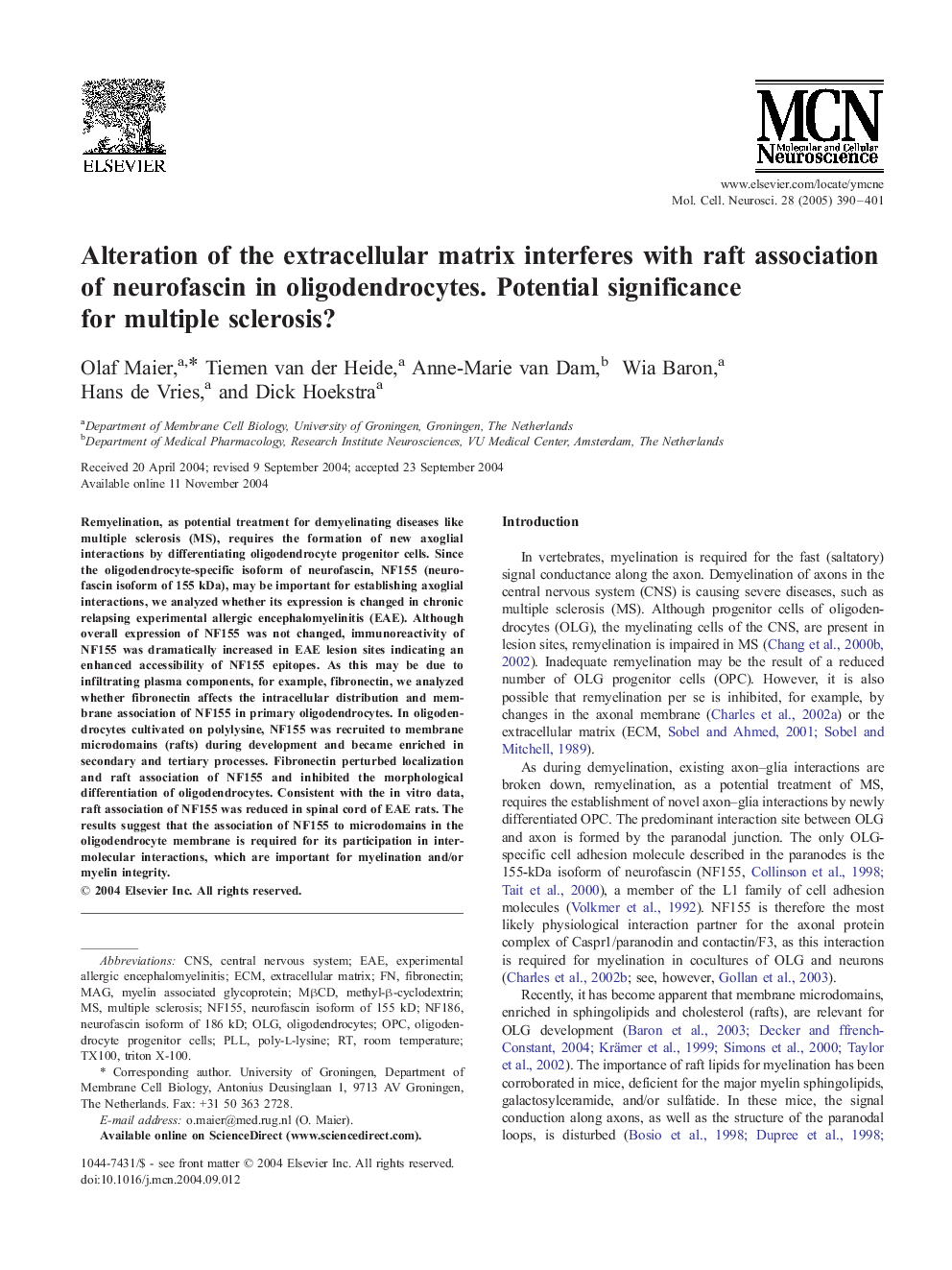| Article ID | Journal | Published Year | Pages | File Type |
|---|---|---|---|---|
| 10956883 | Molecular and Cellular Neuroscience | 2005 | 12 Pages |
Abstract
Remyelination, as potential treatment for demyelinating diseases like multiple sclerosis (MS), requires the formation of new axoglial interactions by differentiating oligodendrocyte progenitor cells. Since the oligodendrocyte-specific isoform of neurofascin, NF155 (neurofascin isoform of 155 kDa), may be important for establishing axoglial interactions, we analyzed whether its expression is changed in chronic relapsing experimental allergic encephalomyelinitis (EAE). Although overall expression of NF155 was not changed, immunoreactivity of NF155 was dramatically increased in EAE lesion sites indicating an enhanced accessibility of NF155 epitopes. As this may be due to infiltrating plasma components, for example, fibronectin, we analyzed whether fibronectin affects the intracellular distribution and membrane association of NF155 in primary oligodendrocytes. In oligodendrocytes cultivated on polylysine, NF155 was recruited to membrane microdomains (rafts) during development and became enriched in secondary and tertiary processes. Fibronectin perturbed localization and raft association of NF155 and inhibited the morphological differentiation of oligodendrocytes. Consistent with the in vitro data, raft association of NF155 was reduced in spinal cord of EAE rats. The results suggest that the association of NF155 to microdomains in the oligodendrocyte membrane is required for its participation in intermolecular interactions, which are important for myelination and/or myelin integrity.
Keywords
Related Topics
Life Sciences
Biochemistry, Genetics and Molecular Biology
Cell Biology
Authors
Olaf Maier, Tiemen van der Heide, Anne-Marie van Dam, Wia Baron, Hans de Vries, Dick Hoekstra,
